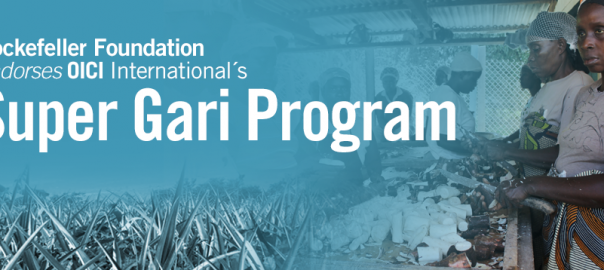In hot, sub-Saharan African climates, perishable food items do not have much of a shelf life, rendering them even more precious. But when processed, many crops can last up to six months.
Cassava, also known as yucca, is a great source of nutrients such as essential carbohydrates and vitamins – necessary elements to fuel hardworking families. However, if not processed within 48 hours of harvesting, farmers can experience as much as 40 percent loss of their cassava crops. Processed as flour or gari (a granular mixture), cassava can be fortified to add nutritional value that especially benefits vulnerable populations who are at great risk of malnutrition or stunting.
![]()
Known as Super Gari, OIC International produces this fortified cereal to include in food rations for program beneficiaries, with the aim of reducing chronic malnutrition. Made locally, Super Gari is comprised of three easily accessible ingredients: cassava gari, defatted soy flour and a micronutrient mixture.
![]()
With funding from the United States Agency for International Development, Office of Food for Peace, OIC International is implementing the Super Gari project in Liberia to take the production of Super Gari one step further by improving the cassava value chain including introducing, testing and bringing the fortified cereal to markets.
Starting at the farm level, OIC International supplies clean planting material and necessary inputs, along with agricultural training for poor farmers. The farmers are then organized into production groups to sell their cassava tubers in bulk to processing facilities that employ women and are owned by OIC affiliates. In return, the processing facilities receive new equipment and additional training to enhance the quality of operations.
Currently in the pre-commercialization phase of the project, OIC International’s Super Gari project team has been exploring various supply chains and distribution channels, with the goal of commercializing Super Gari.
For more information on OIC International’s Super Gari project, click here.
To read the full report, click here.

